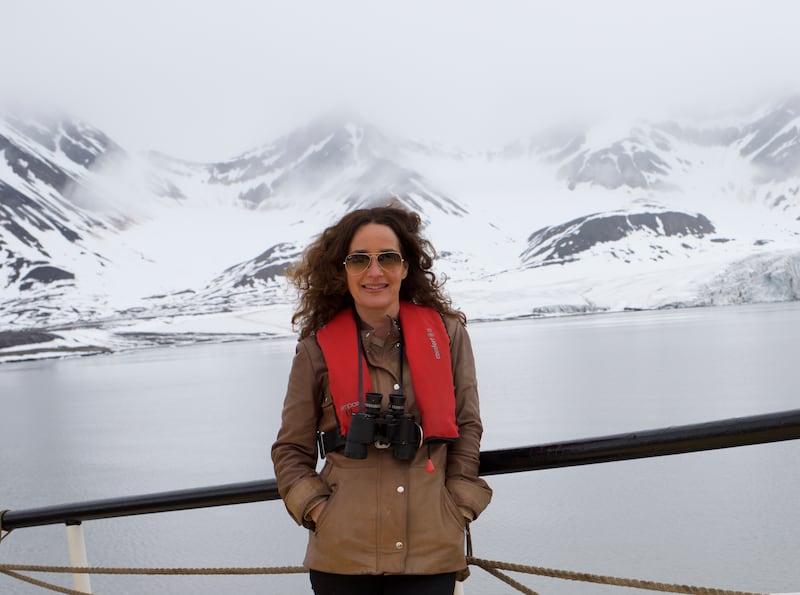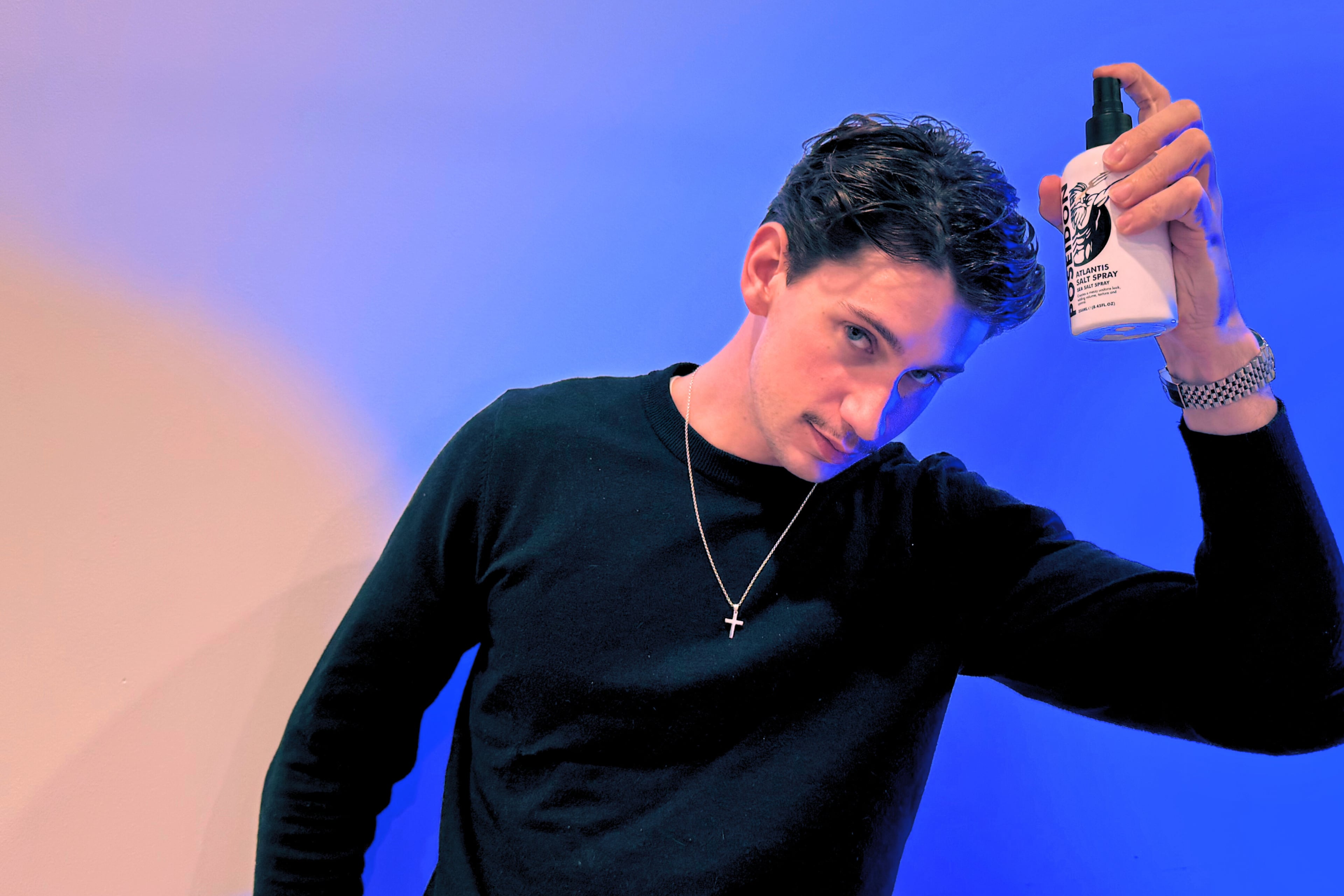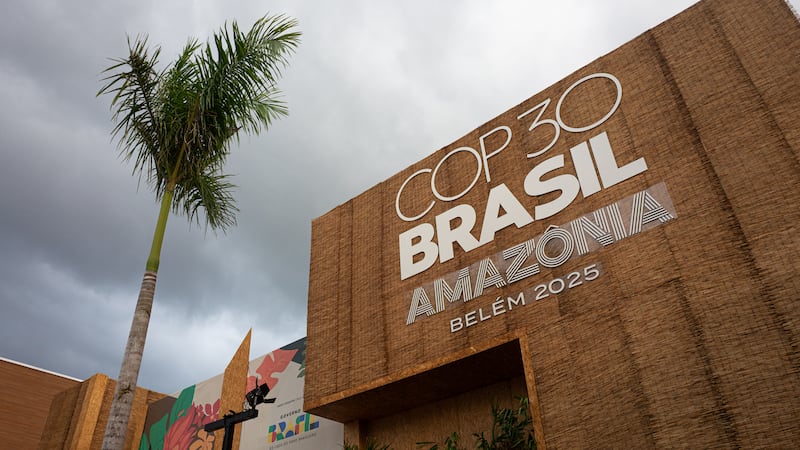The role of artists in exploring natural phenomena comes into sharp focus at the current exhibition in the Model Arts Centre in Sligo town. When looking at, listening to and even smelling the artworks by artist Siobhán McDonald in her current exhibition — The Boglands Are Breathing — one is transported to different landscapes past and present.
The paintings, photographs, videos and installations emerged from research trips to Iceland, Greenland and in bogs across Ireland. Much of the work explores tipping points. In climate science, a tipping point is a critical threshold that, when crossed, leads to large and often irreversible changes in the climate system.
If tipping points are crossed, they are likely to have severe impacts on human society. Equally, it can apply to ecosystems; a point at which they can no longer cope with environmental change, and it suddenly shifts from one state to another. These shifts are almost always negative.

“It’s about the in-between places, the ephemeral sense of landscape. I draw attention to contemporary topics dealing with air, breath and atmospheric phenomena, weaving scientific knowledge into the artistic realm,” she explains.
RM Block
McDonald, who is artist-in-residence at the School of Natural Sciences at Trinity College Dublin, works with Prof Jennifer McElwain, head of the School of Botany.
McElwain says the value of artists working with scientists is twofold. “They communicate complex science in a visual way that engages new audiences — reaching out to people with their heartstrings which scientists are not good at doing in dry academic publications,” she says.
The conversations between scientists and artists are very organic
— Siobhán McDonald
On another level, McElwain says artists ask probing questions that are beneficial to scientists. “They send you off in a direction you mightn’t have considered. Or they ask basic questions that we have made assumptions about which makes us go back and look at what the fundamental science is built from.”
Often working alongside scientists through various collaborations, McDonald says that her focus remains on creating art even when artists are specifically invited to challenge more formal scientific methodology. “The conversations between scientists and artists are very organic,” she adds.
It was through her international residency (mainly via Zoom due to the pandemic) with artists and scientists in Studiotopia, that she was invited on a research vessel to Greenland with the US National Science Foundation in October 2022. Her mission was to record the changing acoustic and sensory environments.
The scientists were analysing sea salinity, whale migration, ice floes and other phenomena as knowledge of sea level rise and accelerated ice melting continue to cause great concern around the world.
“I like to go to fragile places in the world where you can see the forces of nature gather. Greenland is one of the only places known on earth where it is possible to fully grasp the timeless, unpopulated wilderness,” she explains.
On the ship, she had a glass studio upstairs with 360-degree views. “I got to see 20,000 years pass by as the boat moved slowly past icebergs. During the trip, I collected [glacier] water, I drew, painted, wrote and made installations on the boat.” She also took stunning photographs of icebergs as they broke off the land and waters of west Greenland.

According to McDonald, The Boglands Are Breathing imagines an emerging ecosystem inspired by the ground and all the visible and invisible interactions that run through it and the potential it holds.
For example, there are photographs of melting icebergs, a painting of people walking on an Icelandic glacier and a glass vessel filled with 20,000-year-old glacial water. There is also incredible footage of the process of drilling down into gigantic ice blocks, brought back from the British Antarctic Survey expeditions.
And in A Library of Lost Smells, McDonald has arranged glass shelves full of bottles with distilled essences of underground and over-ground smells from Irish bogs. “These smells are a connection with memory. It’s a response to Prof Helen Sheridan’s project, Unlocking Nature’s Pharmacy at Trinity College Dublin.”
The aim is to transport participants through time as a reminder of the increasing levels of plant extinction,” explains McDonald who grew up close to the boglands of Co Monaghan.
It’s about deep time — the slow-moving processes on the earth
— Siobhán McDonald
Another exhibit is an illuminated book made from the animal skin used in ancient manuscripts (inspired by the Fadden More Psalter which was discovered in a peat bog in 2006), showing remedies made from the essences in the scent library.
As we walk from room to room in the 19th-century building and striking contemporary extensions of The Model, we are drawn further and further into geological time. “It’s about deep time — the slow-moving processes on the earth,” she says.
One exhibit is of recordings of the sounds of melting permafrost juxtaposed with the sounds in exposed boglands. In another, she overlays X-rays of people’s lungs on to images of bog plants to explore the symbiotic processes of breathing between plants and humans.
McDonald is intrigued by the parallel processes happening in Arctic regions and on Irish boglands since turf-cutting stopped. “I explored how [in Greenland], the permanently frozen land and soil is thawing out to reveal hidden secrets similar to those found in Irish bogs — such as methane gas,” she explains. She has even painted on ice and mycelium, mixing carbonated charcoal with methane to make ink — to explore the transience of all things.
McDonald describes the works as a “meditation on memory and time” looking at how as the ocean holds the landscape and the ice that is spilling into their waters, they also record ruptures from one state of being to another. “There is also a message of hope as it’s about the earth trying to come back into balance,” she adds.

Referring specifically to the current exhibition, McElwain says she was particularly impressed with the piece entitled, Cosmic Gas which explores the impact of methane gas in bogs. “Siobhán visited Clara Bog with a team of researchers, led by Matthew Saunders. These researchers are measuring the release of methane and the uptake of carbon dioxide on different sections of the bog which are drained or rewetted.”
What interests her is how McDonald drew attention to the invisible gas of methane by making ink with it and then creating drawings and lithographic prints. McDonald herself describes these works on paper as bearing the direct imprint of plant fragments, matter from what used to be living organisms which over time have become gaseous. “The drawings appear delicate and complex, conveying the light and dark histories from which they emerge,” she adds.
McDonald is already planning her next work. “I worked with an oceanographer in Greenland who was listening to the song of the whale and how it has changed due to pollution in the ocean,” she says.
As part of her work, this oceanographer has sent hydrophones down to the deepest part of the ocean to record earthquakes, landslides, wildlife, pollution and meltwater. “In two years time, I will work with a composer to create an immersive installation from what comes up,” says McDonald,
- The Boglands Are Breathing by artist Siobhán McDonald continues at The Model and Niland Gallery, Sligo until July 8th (Tuesday-Saturday, 11am-5pm) admission is free — themodel.ie
![Methane Lake a video installation that explores the slow workings of geological processes found deep in permafrost, meditating on the sentience of ice by Siobhán McDonald, who has 'explored how [in Greenland], the permanently frozen land and soil is thawing out to reveal hidden secrets similar to those found in Irish bogs — such as methane gas.'](https://www.irishtimes.com/resizer/v2/5N4KXLJCTNG3TDB4NGDREJH4TY.jpg?auth=c7836b9aa8277dcd835fa90ad15e57122416b1467f2785d2e1e6c9694a760a22&smart=true&width=1024&height=768)















